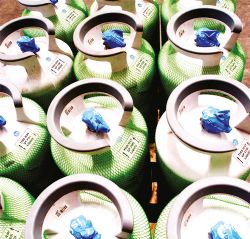Refrigerants are developing fast and the industry has a responsibility to work together to determine the best refrigerant(s) for each application, says Stephen Yurek
When our industry began transitioning under the Montreal Protocol from HCFCs, we undertook a co-operative research program that identified HFCs as the preferred alternative for most applications. In that process, we were under a strict deadline to come up with an alternative or alternatives.
Today, we are in a similar situation with respect to the dominant industry refrigerant - hydrofluorocarbons (HFCs). The HFCs that have replaced HCFCs are now themselves under scrutiny because of their relatively high global warming potential (GWP). The difference between then and now is that there is no concrete plan to phase out or phase down HFCs; there have only been proposals in various regions.
The fact that nothing is definite should not provide comfort to us, however. There is little question that HFCs are going to be regulated. The only question is when. But the nexus between talk and action by regulators allows us time to research alternatives and plan for the eventual phase-down of HFCs.
Recognising that it is better to comply with one phase-down schedule than multiple plans from multiple regions or countries, AHRI has supported the effort of the US, Canada, and Mexico to have an HFC phase-down added to the purview of the Montreal Protocol. That effort is ongoing, but there has been resistance from developing nations such as China and India, which are just beginning their phase-out of HCFCs.
The Montreal Protocol has often been suggested as a model for worldwide collaboration on climate change. A little known fact about the Montreal Protocol, incidentally, is its success in combating climate-threatening gases).
At its midpoint, between 2010 and 2040, the climate benefit of the Montreal Protocol will be the equivalent of eliminating the climate emissions from half of all US passenger vehicles for the next 30 years.
We believe the same measure of success can be achieved for HFCs by including them in the Montreal Protocol. But, even as we try this route, we must ensure that in the event HFCs are to be phased down, the transition is orderly and incentives are provided for new refrigerants that have a low GWP and high energy efficiency.

Furthermore, many criteria must be taken into account when deciding which refrigerant is best for each application. These include equipment size and location, operating pressures, capital and operating cost, regulations and operating temperatures.
When the HCFC phase out began some 20 years ago, industry undertook research known as the Alternative Refrigerant Evaluation Program (AREP). This resulted in HFCs playing the dominant role in air conditioning and refrigeration applications The difference between then and now, however, is that it appears unlikely that one refrigerant will dominate the market. Rather, it seems likely that tomorrow's refrigerants will be selected according to how well they meet the requirements of a particular application.
Accordingly, AHRI has invited our member companies to work with us to identify the alternative refrigerants that have the lowest GWP while still offering suitable efficiency, economy, and availability. Known as the Low Global Warming Potential Alternative Refrigerants Evaluation Program (Low-GWP AREP), the research effort has already identified a group of synthetic and natural refrigerant candidates that are being tested and evaluated. The program should help industry select promising low GWP refrigerants, understand technical challenges, avoid duplication of effort, and efficiently use industry resources.
Several refrigerant candidates are being put forward for testing, but two potential replacements are increasingly discussed within the industry: R-32 (an HFC) and 1234yf (an HFO).
R-32 is a component of R-410A. It is plentiful, economical, and efficient. In the past, it was lumped in with lower flammability refrigerants, but recently was reclassified in ASHRAE Standard 34 into a new category called A2L, which contains refrigerants with even lower flammability than A2 chemicals. Its main potential drawback is its GWP of 675 which, while considerably less than the 2090 GWP of R-410A, is considerably higher than the 1234yf GWP of 4.
As they consider alternatives to R-22, the Chinese are reportedly looking seriously at R-32 as a widespread replacement, which is why that country has been reluctant to embrace efforts to establish a phase-down of HFCs under the Montreal Protocol.
1234yf is already poised to be a major player in automotive air conditioning, but it has not been extensively tested for stationary air conditioning applications.
HFCs are safe, containable, reclaimable, and recyclable gases which are highly energy efficient.
While all other greenhouse gases are byproducts of some process, HFCs are intentionally produced as energy efficient refrigerants for use in, among other things, air conditioning and refrigeration applications.
In summary, we are in a better place with respect to time and preparation than we were in the transition from HCFCs. There might indeed prove to be no 'magic bullet,' but the industry is working together to determine the best refrigerant(s) for each application.
// The author is president of the Air- Conditioning, Heating and Refrigeration Institute //